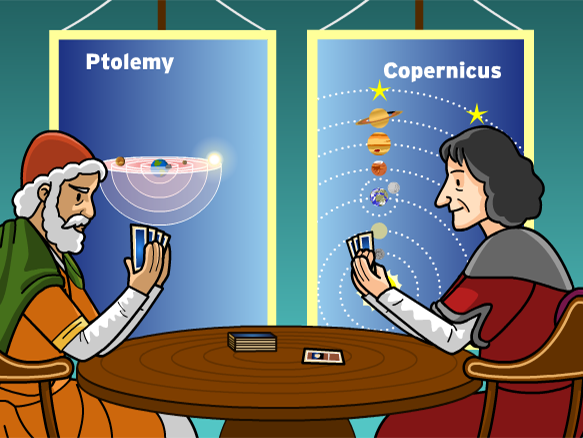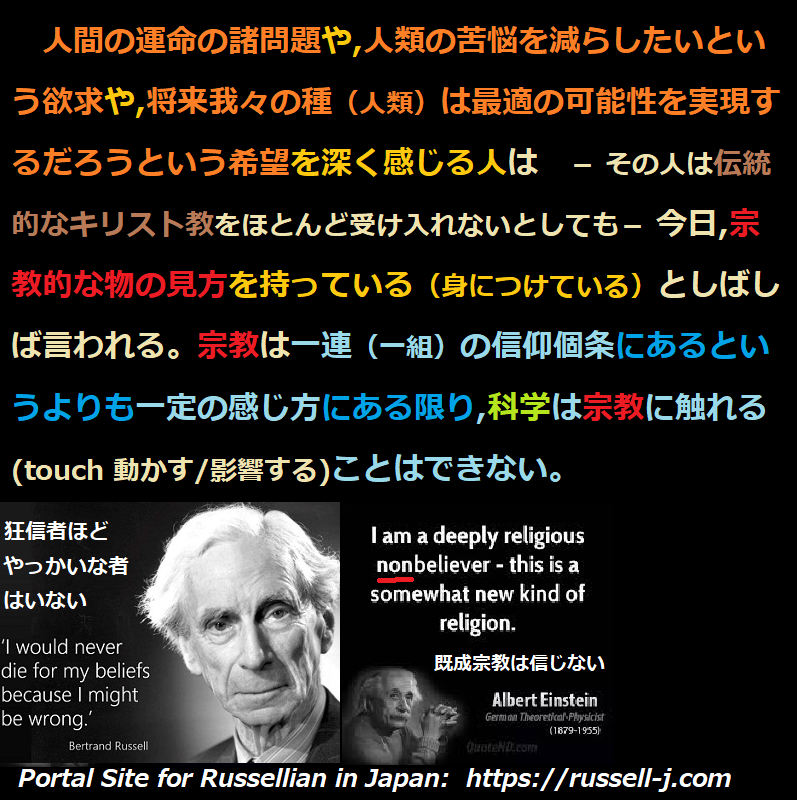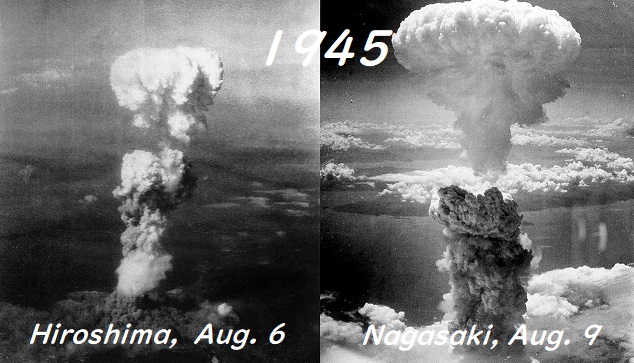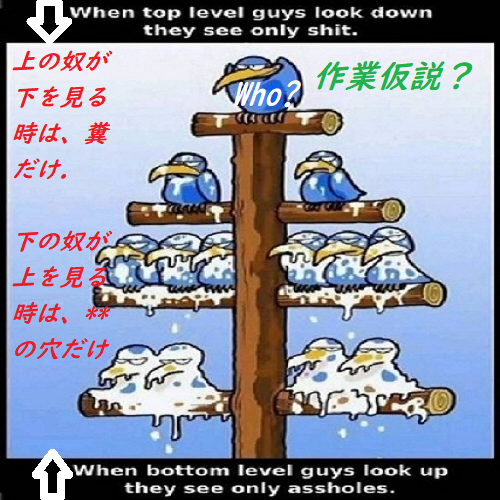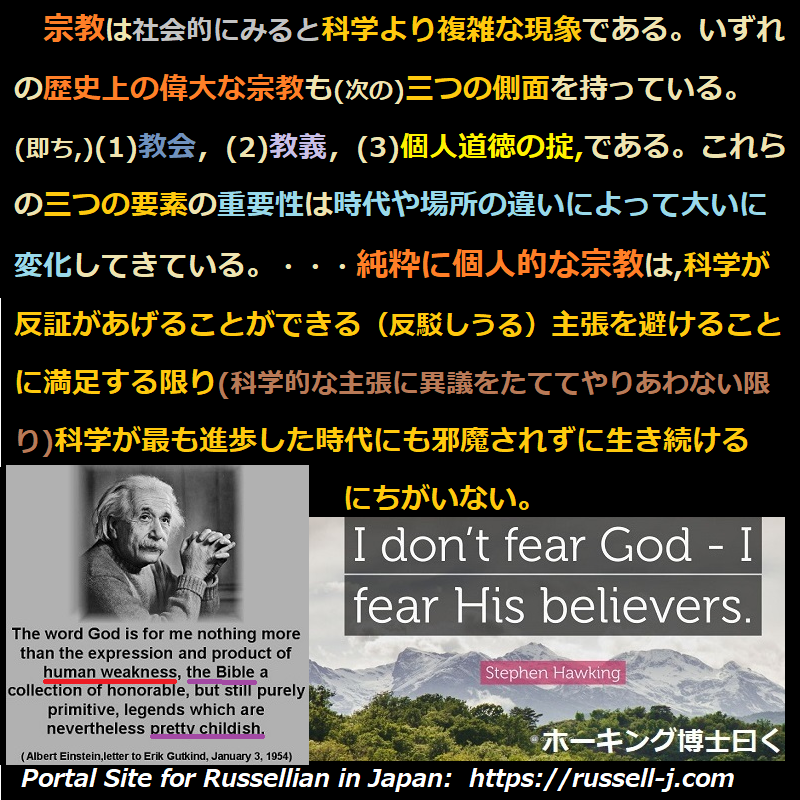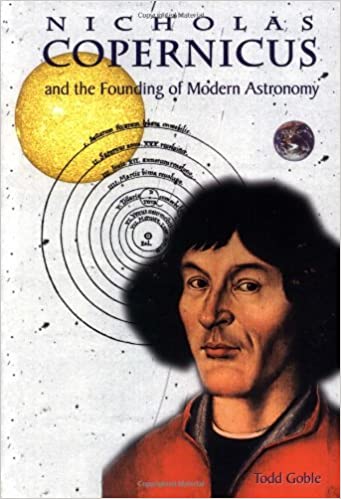
コペルニクス(1473-1543)は,もしかするとそれに値しないかも知れないが,コペルニクスの体系(=地動説)にその名(自分の名前)を冠する栄誉(名誉)を持っている(荒地出版社刊の津田訳では「perhaps scarcely deserved」を「おそらくそれ(名誉)の値しないのだが」と訳している。次の段落でラッセルは「コペルニクス理論は,想像の実り豊かな努力であり,その後の発展を可能にした点に於て重要であるけれども・・・」と書いており,矛盾する。「pobably」なら「多分(おそらく)」というニュアンスになるが,「perhaps」は「可能性はあるが確実性はないことを示し,可能性の大小を問題にしない」ことから、「もしかすると」あるいは「ことによると」の訳し方の方がよいと思われる。)。彼は(ポーランドの)クラクフ大学(注:the University of Cracow = University of Krakow:ポーランド最古の大学/現地読みでは「クラクフ」)で学んだ後,青年の時イタリアに行き,1500年までにローマで数学の教師になった(津田氏は「by the year 1500 he had become a mathematical professor in Rome」を「1500年まで,ローマで数学教師になった。」と訳している。「by」は「~までに」であり,「had become(~になった)」と書かれているので,誤訳)。けれども,彼は,3年後にポーランドに帰国し,通貨の改革やチュートン騎士団(注:十字軍時代の3大宗教騎士団の1つでドイツ騎士団とも言われる。)との闘争に専心した。1507年から1530年に至る23年間,彼の余暇の時間は,大著「天体の革命について」の著述に費やされ,この本は,彼の死の直前の1543年に出版された。 コペルニクス理論(地動説)は,その後の発展を可能にした想像力の実りある努力であったけれども,それ自体はそれでもとても不完全なものであった。惑星は,現在我々が知っているように,太陽の周りを円形ではなく楕円形で回っており,太陽は,その回転の中心ではなく,焦点の一つを占めている。(また,)コペルニクスは,惑星の軌道は円形でなければならないという見解に固執し,それら(惑星)の(軌道の)不規則性を太陽が任意の惑星の軌道の完全な中心にいないからだと想定することによって説明した(注:惑星が一つならその惑星は太陽の回りを円形で回転するが,多くの惑星があるのでそうはならない,ということか?)。このことは(この想定/考え方は),彼の(理論)体系から,プトレマイオス(の理論)に対する最大の長所であった(その)簡潔性を,一部奪った。そして,もしケプラー(の法則)によって訂正されなかったなら,ニュートンによる一般理論化を不可能にしてしまっていたであろう。コペルニクスは自分の中心的な学説(doctrine)は既に(ギリシア人の)アリスタルコスによって説かれていたことに気づいていた。そのアリスタルコスに関する断片的知識は,イタリアにおける古典研究の復活に負っており,それなしには(古典研究の復活がなければ),限りなく古代が讃美されていた当時において,彼は自分の説を発表する勇気をもたなかったであろう(注:讃美された古代ギリシアの人物が言ったことだということで権威付けになったということ)。そのような状況であったので(As it was),彼は教会の厳しい非難(ecclesiastical censure)を恐れ,地動説の発表を長い間遅らせた。彼自身,聖職者であり,自分の著作を法皇に献呈した。そうして,その本の発行者のオジアンダーは,地動説は単なる仮説として提出されるのであって疑いようがない真理(positive truth)として主張されているのではないという序文を付け加えた。(もしかすると,その序文はコペルニクスにより是認されていなかったかも知れない)。しばらくの間,これらの戦術で充分だった。そして,ガリレオ(1564-1642)のより反抗的な態度によって初めて(過去に)遡ってコペルニクスに対する公的な非難がもたらされた(のである)。
Chapter 2: The Copernican Revolution, n.2
Copernicus (1473-1543) has the honour, perhaps scarcely deserved, of giving his name to the Copernican system. After studying at the University of Cracow, he went to Italy as a young man, and by the year 1500 he had become a mathematical professor in Rome. Three years later, however, he returned to Poland, where he was employed in reforming the currency and combating the Teutonic Knights. His spare time, during the twenty-three years from 1507 to 1530, was spent in composing his great work On the Revolutions of the Heavenly Bodies, which was published in 1543, just before his death. The theory of Copernicus, though important as a fruitful effort of imagination which made further progress possible, was itself still very imperfect. The planets, as we now know, revolve about the sun, not in circles, but in ellipses, of which the sun occupies, not the centre, but one of the foci; Copernicus adhered to the view that their orbits must be circular, and accounted for irregularities by supposing that the sun was not quite in the centre of any one of the orbits. This partially deprived his system of the simplicity which was its greatest advantage over that of Ptolemy, and would have made Newton’s generalization impossible if it had not been corrected by Kepler. Copernicus was aware that his central doctrine had already been taught by Aristarchus — a piece of knowledge which he owed to the revival of classical learning in Italy, and without which, in those days of unbounded admiration for antiquity, he might not have had the courage to publish his theory. As it was, he long delayed publication because he feared ecclesiastical censure. Himself an ecclesiastic, he dedicated his book to the Pope, and his publisher, Osiander, added a preface (which may perhaps have been not sanctioned by Copernicus) saying that the theory of the earth’s motion was put forward solely as a hypothesis, and was not asserted as positive truth. For a time, these tactics sufficed, and it was only Galileo’s bolder defiance that brought retrospective official condemnation upon Copernicus.
出典:Religion and Science, 1935, chapt. 2.
情報源:https://russell-j.com/beginner/RS1935_02-020.HTM

